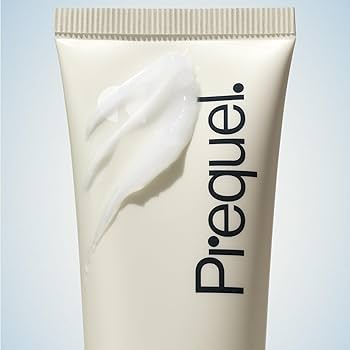Slugging: for Dry Skin only?
In recent years, the skincare world has witnessed a surge in the popularity of a technique known as slugging. While the concept of applying thick, occlusive ointments to the skin may sound unusual, the benefits it offers have captured the attention of beauty enthusiasts and dermatologists alike. As the name suggests, the process involves a greasy, sometimes slimy layer of petroleum jelly applied to the face, leaving behind the appearance of a skin-care slug. But beyond the playful moniker lies a deeply functional technique rooted in hydration, skin barrier repair, and effective moisture retention. However, despite its widespread usage, confusion persists regarding who should incorporate slugging into their routines, how to do so effectively, and the true science behind it. Here, we explore the mechanics of slugging, examine its benefits, and uncover who should, and who should not, embrace this skincare trend.
The Mechanics of Slugging
Slugging involves the application of an occlusive, thick layer of petroleum-based product over the skin, typically as the last step in a nighttime skincare routine. This layer acts as a barrier, trapping moisture and preventing transepidermal water loss (TEWL) while the skin works its magic overnight. The goal is to allow the skin to regenerate and heal without losing precious hydration, particularly after it has been exposed to environmental stressors like pollution, harsh weather, or intense skincare treatments.
Petrolatum, the core ingredient in slugging, is an excellent moisture-sealing agent. The name "slugging" is derived from the slimy, sticky texture of the product, which resembles the trail left by a slug. Slugging works best when the skin barrier is compromised or when moisture retention is a concern. This is why slugging is frequently recommended for those recovering from procedures such as chemical peels, micro-needling, or laser treatments, where the skin’s integrity needs nurturing.
Does Slugging Clog Pores?
One common concern regarding slugging is the potential for clogged pores. Since slugging involves applying a thick, occlusive layer, many worry that it may trap oils, dirt, and impurities, leading to blockages. However, research suggests that petrolatum, the main ingredient in slugging, is non-comedogenic, meaning it generally does not clog pores. That said, it’s essential to ensure your skin is thoroughly cleansed before applying the product. If there are residual oils, dead skin cells, or makeup on the skin, slugging can trap these impurities, potentially leading to breakouts. For individuals with oily or acne-prone skin, this is especially crucial. While slugging can be beneficial for hydration, improper cleansing beforehand could exacerbate acne. Therefore, it’s important to tailor slugging to your individual skin type and be diligent with your cleansing routine to minimize any risk of clogged pores.
Is Petroleum Jelly Safe?
Petroleum jelly, or petrolatum, is the most commonly used occlusive agent for slugging. Though it has been a staple in skincare for over a century, it has faced its fair share of criticism, particularly from proponents of clean beauty. Critics often cite concerns over its origin from crude oil and the potential for harmful impurities in unrefined forms. However, experts point out that cosmetic-grade petrolatum undergoes thorough refining to remove any toxic components, such as polycyclic aromatic hydrocarbons (PAHs), which can be carcinogenic when present in unrefined petroleum.
In fact, the refining process ensures that petrolatum is safe for use on the skin, making it an inert substance that doesn’t react with skin proteins, thus minimizing the risk of irritation or allergic reactions. Unlike many water-based skincare products that require preservatives to maintain their shelf life, petrolatum’s anhydrous (water-free) nature eliminates this need, which can benefit those with sensitivities to preservatives. Furthermore, petrolatum’s non-comedogenic nature (meaning it doesn’t clog pores) has been confirmed by studies, though individuals with acne-prone or oily skin may still experience breakouts if they don’t cleanse properly before slugging.
Who Should Consider Slugging?
Slugging is particularly effective for those with dry, irritated, or compromised skin. The occlusive nature of petroleum jelly helps trap moisture, making it a go-to product for individuals who suffer from dry skin or conditions like eczema, psoriasis, or rosacea. It’s especially beneficial for those whose skin feels tight or dehydrated after applying skincare products or who wake up with dry, flaky skin in the morning. If you’ve recently undergone a cosmetic procedure such as a chemical peel, laser treatment, or micro-needling, slugging can help accelerate recovery by creating a protective barrier that locks in moisture and supports skin healing.
In addition to its skin-healing properties, slugging can offer relief during the colder months when low humidity, indoor heating, and cold air increase the risk of TEWL. When the skin’s moisture barrier is compromised, slugging can provide much-needed protection, restoring hydration and improving the skin’s overall health. It’s not necessary to slug every night, but incorporating it into your routine during dry spells or after intensive skincare treatments can significantly improve your skin’s resilience.
Who Should Avoid Slugging?
Despite its many benefits, slugging is not for everyone. Individuals with oily or acne-prone skin may find the thick, greasy texture of petroleum jelly to be overwhelming. In such cases, slugging can exacerbate the sensation of oiliness, potentially triggering breakouts. However, it’s possible for those with oily skin to incorporate slugging selectively, targeting only areas of the skin that are dry or irritated while avoiding the rest of the face.
Slugging may also be less desirable for individuals who live in humid climates or sweat heavily during sleep. The occlusive layer of petroleum jelly can trap heat and moisture, making it uncomfortable and possibly irritating for those prone to rosacea or skin inflammation. The trapped warmth may trigger flare-ups, leading to redness, irritation, or discomfort. People with sensitive skin, particularly those prone to excessive heat buildup or skin inflammation, should also approach slugging with caution.
Alternatives to Vaseline
Exploring Other Products for Slugging
While Vaseline remains the most well-known and widely used product for slugging, several alternatives cater to those seeking something different in terms of texture, ingredients, or purpose. Aquaphor, for example, combines 41% petroleum jelly with lanolin and mineral oil, creating a more spreadable and less greasy option. It’s a popular choice for post-procedure care, although those with lanolin sensitivities or those seeking vegan products should avoid it.
For those who prefer a product with added skincare benefits, CeraVe’s Healing Ointment offers 46.5% petrolatum, along with ceramides and panthenol, which hydrate and condition the skin. These additional ingredients provide extra moisture and skin-repairing benefits, making it ideal for those looking for a more nourishing alternative to plain Vaseline.
Prequel’s Skin Utility Ointment is another option for slugging enthusiasts. With 45% petrolatum, the ointment contains a shielding polymer that allows the product to be more breathable than traditional petroleum jelly. This makes it ideal for those who want the occlusive benefits of slugging without the heavy, greasy feel of petroleum jelly.
Two additional options for hydration and skin barrier support are CeraVe Moisturizing Cream and First Aid Beauty Ultra Repair Cream. CeraVe’s cream is rich in ceramides and hyaluronic acid, offering deep hydration and helping to restore the skin’s natural barrier. First Aid Beauty’s cream provides intense moisture and helps soothe irritated skin, making it ideal for sensitive skin or those recovering from harsh environmental conditions.
How to Slug Your Skin Effectively
To ensure that slugging delivers the desired benefits, applying the product correctly is essential. Begin by thoroughly cleansing your skin, as any impurities or oils will be trapped under the occlusive layer. This ensures that only beneficial ingredients are sealed into the skin. After cleansing, apply the occlusive ointment directly onto damp skin. Damp skin helps the product lock in moisture more effectively.
Start with a small amount of product, about the size of a pinky nail, and apply it evenly across your face and neck. Remember, less is more when it comes to slugging. Over-applying can make removal difficult and uncomfortable. For the best results, apply the product about 30 minutes before bed to allow it to settle without rubbing off on your pillow. While slugging is most commonly done at night, it can also be used as a treatment for specific dry areas throughout the day.
Avoid applying slugging products directly over active ingredients like retinoids or exfoliating acids, as this can increase their penetration and cause irritation. Instead, slugging should be used when your skin is not undergoing intense treatment, such as during a break from exfoliating products or retinoid-based treatments.
Slugging Beyond the Face
Body Care Applications
While slugging is primarily associated with facial skincare, the technique can also be beneficial for the body, particularly for conditions like eczema or dry, irritated skin. A popular method for body care is “soak and smear,” where individuals soak in a bath to hydrate their skin before immediately applying an occlusive ointment. This technique locks in hydration and can help soothe inflamed or damaged skin.
Is Slugging Right for You?
Slugging is a great tool in your skincare arsenal, offering deep hydration and support for skin healing, particularly if you have dry, irritated, or sensitive skin. When applied correctly, it can enhance the effectiveness of other skincare products, boost moisture retention, and promote skin barrier repair. However, it’s crucial to approach slugging with awareness, as it’s not suitable for everyone. People with oily or acne-prone skin, or those living in hot, humid climates, should exercise caution. As with any skincare trend, it’s important to listen to your skin, adjust your routine based on its unique needs, and seek professional advice when in doubt.



















